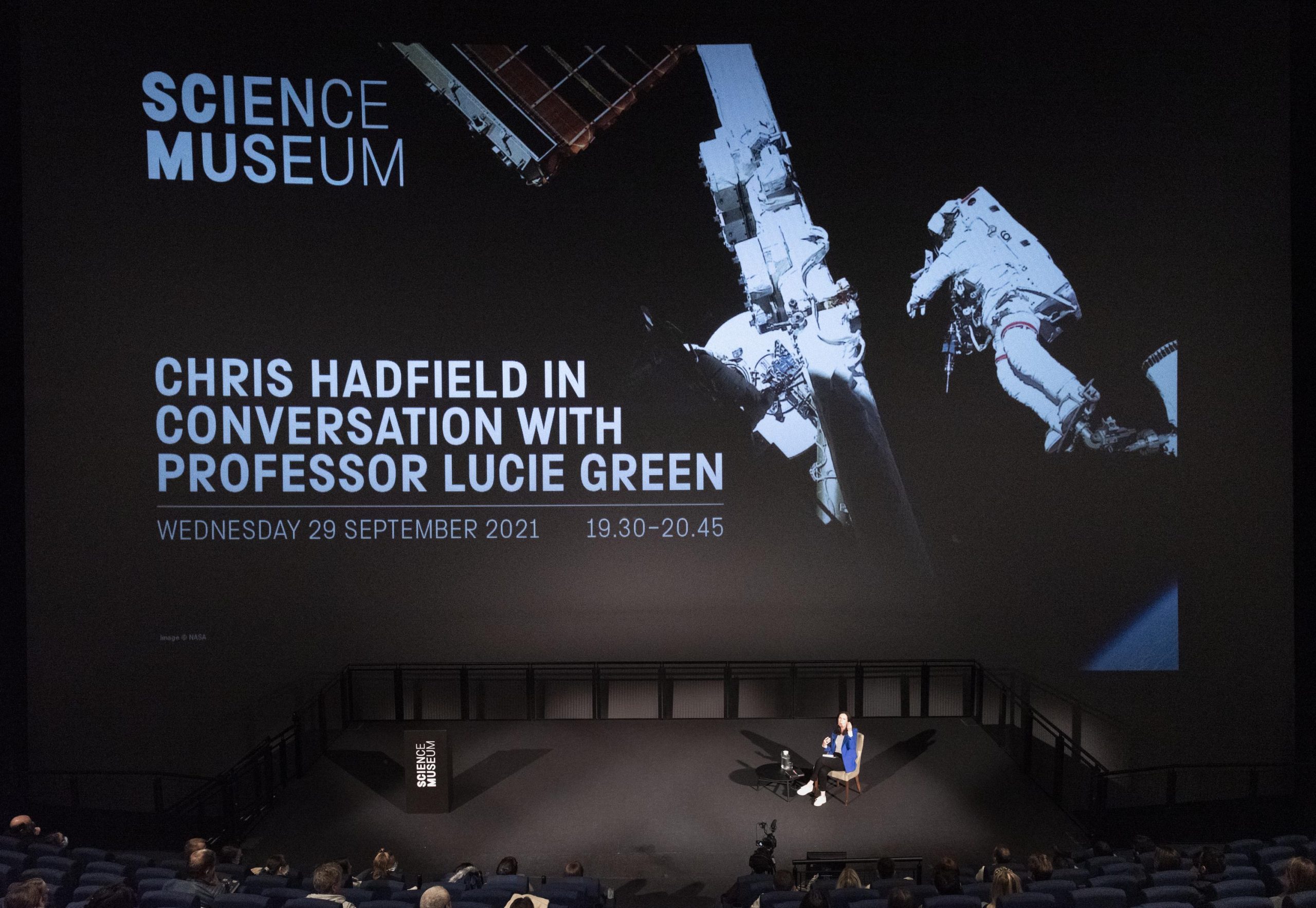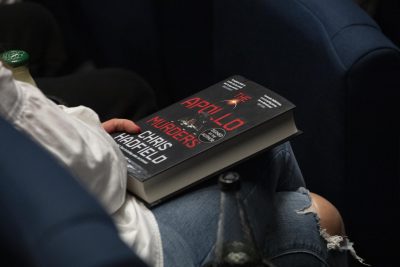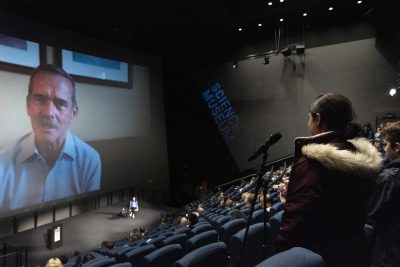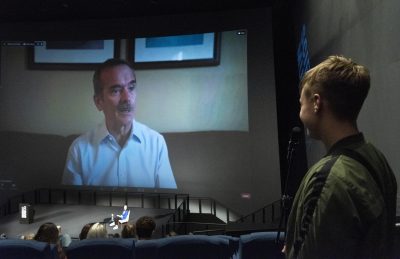On 29 September, live events returned to the Science Museum’s IMAX, for the first time in over 18 months, when Chris Hadfield joined us on the big screen over Zoom.

Chris Hadfield has turned his hand to many careers over the years: he was a military fighter pilot and a test pilot before he became an astronaut and the first Canadian to walk in space.
But it is since he has returned to solid ground that he has become a true multi-hyphenate: professor-presenter-musician, he’s written a picture book for children as well as non-fiction, and now, he’s a novelist.

‘All of those (roles) are just trying to let people, through whatever means best gets into their psyche, to see what this is actually like: this new human experience,’ he said. Chris is passionate about sharing how it feels to soar above the Earth and watch the days below pass by in a flash, every hour and a half.
His latest attempt to communicate the impact of orbiting our fragile, resilient world is a Cold War thriller set in the heart of the space race, The Apollo Murders. This alternate history, imagining what might have been the first military encounter in space, is based solidly in fact.
It interweaves the suspense of his fictional plot with the events of the spring of 1973 and his own experience as an astronaut . It is this unique viewpoint that he shared with the event’s host, solar physicist Professor Lucie Green and some (no doubt) future astronauts in the audience.

What’s the journey like? ‘It takes you from who you are to the place of your dreams,’ he said. All of that achieved by a journey that takes just nine minutes, and 80 million horsepower. ‘It’s better than I dreamed it would be. And I had really high expectations.’
How does lift-off and re-entry feel? He described it as a violent experience: you lie on your back, constantly squashed minute after minute by the pressure, rattled around like dice in a cup. That is until, suddenly, the engines shut off and you’re weightless. And re-entry is not dissimilar, but over a longer period. The capsules are not the smoothest ride, they’re ‘more like throwing a stone into a pond,’ he said. ‘You BANG into the world and, because you’ve got a parachute and it’s windy, you go sideways. The whole vehicle rolls over and over – and you’re inside.’
The recent spate of commercial space flights was raised and Chris is excited by them. He sees parallels with the Wright brothers being confronted with airliners only twenty years after their first attempts at flight. ‘It is the natural progression of a technology’, he said, ’that a crazy idea eventually gets rolled up into the life of society. What once was only the purview of governments is changing – and there’s a whole universe out there for professional astronauts in the meantime.’

On the journey through the museum to the event, I strolled past the scorched Apollo 10 Command Module and a full-sized replica of Eagle from the Apollo 11 mission that took Armstrong and Aldrin to the Moon. I had stared at the Soyuz descent module that carried Tim Peake, Yuri Malenchenko and Tim Kopra back from the International Space Station in 2016. These incredible objects are all smaller than you’d think. Certainly without much room for an overhead luggage rack.
Perhaps with this in mind, as we came to the end of the event, Chris was asked what gets packed by professional astronauts. He told the audience that everyone brings small keepsakes, and sometimes these get left behind.
The most surprising object left on the International Space Station? A gorilla costume.